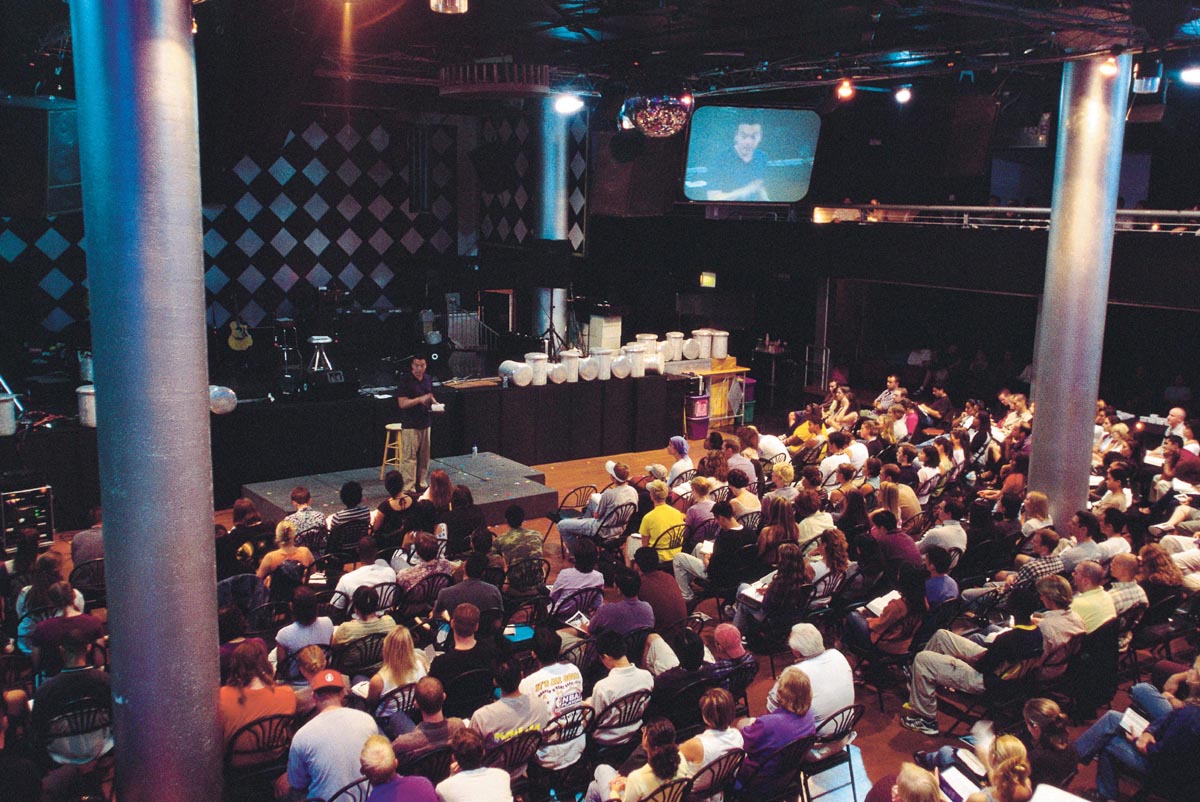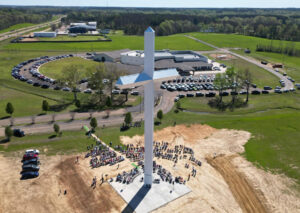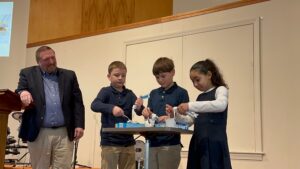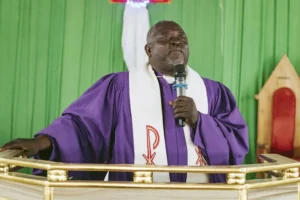
ALPHARETTA, Ga. (BP)–A new television special produced by the North American Mission Board will introduce a secular audience on ABC-affiliated stations to a different kind of church — those designed to offer a distinctly postmodern approach to worship and the Christian faith.
The special, titled “The Changing Face of Worship,” details the response of nine different churches to the rise of postmodern culture. It will begin airing on local affiliates Dec. 7, with scheduling at the discretion of the local station.
Eric Ramsey, a NAMB church planting specialist and one of the executive producers for the project, said the goal was to reintroduce the church to “an entire generation to a generation-and-a-half of people” who have found the church irrelevant.
“Their experience with church is that ‘you to need to change all of your ways and be like us,'” he said. “One thing that I would like the national ABC audience to understand is that there are churches that are intentionally trying to connect with people just like them, and provide relevant expressions of worship, relevant ministries and relevant activities without compromising biblical truth and integrity.”
The documentary is part of the “Vision and Values” series of the Interfaith Broadcast Commission. Other NAMB-produced network documentaries in the same series have tackled issues ranging from the faith of professional athletes to the role of churches in the Civil Rights movement.”
The churches profiled include a mix of Southern Baptist and other evangelical congregations, with a common theme being that they were designed to attract individuals with a postmodern mindset.
“As the modern era of our culture gives way to what is widely known as postmodernism, many churches are finding that more and more people are looking elsewhere for spiritual answers,” the introduction to the video states. “Yet, not all churches are declining. Some have embraced this challenge as a call to action — and a call to think in new ways about how to convey their unchanging message.”
Noted author Leonard Sweet further describes the fundamental premise of these churches. “Whatever the culture is, you incarnate the Gospel, embed the Gospel in that culture. You go live with them, you eat with them and you become one of them. And you learn their music and you learn their language. And these emerging churches are just learning the language of this postmodern culture.”
Ed Stetzer, a NAMB church planting specialist and author of “Planting New Churches in a Postmodern Age,” also contributed to the effort.
Churches profiled in the special include:
— Mosaic, a Los Angeles congregation known for its multisensory worship experiences. “One of the distinctions of Mosaic is that we understand that all creation is here to draw us to worshiping God,” pastor Erwin McManus says in the special. “… We worship through sound, and sight, and touch, and taste, and feel.”
— Mars Hill Church, a Seattle congregation that has grown to 1,200 members in six years with its incorporation of the city’s diverse musical styles. “To mediate the truth of Jesus through culture you need to speak the same language as the people in the culture,” pastor Mark Driscoll says. “What that means is, musically, it should sound the same as everything else that is being played. But content should be different and should be something that does align itself with the truth of Scripture and the truth of Jesus.”
— The Kidz Church ministry of First Baptist Church of Springdale, Ark., which takes a radical approach to children’s worship in an interactive game show-styled setting known as “Wacky World.” “We’ve had parents tell us that their kids, on Saturday, will begin to jump up and down and go, ‘Yes! It’s only one more day to church. We can’t wait for tomorrow,'” Dale Hudson, children’s pastor at the church, says.
— OneEighty, the youth ministry of Church on the Move in Tulsa, Okla., which attracts 1,000 to 1,400 youth each week — many by bus — from a cross-section of cultures. “Dakota tribal wisdom says that when your horse dies, the best strategy is to dismount. And the truth is that a lot of what we’ve been doing in the church in reaching young people today is just a dead horse,” Blaine Bartel, the ministry’s director, says. “It’s not working anymore. It’s not taking us where we need to go. So we’ve got to get off that horse. And we’ve got to get on a different horse.”
Bernie Hargis, the program’s producer and director, suggested individuals consult local listings for airtimes — or contact their local ABC affiliate.
“They need to ask for it by name, and they need to mention it is part of the Vision and Values series,” Hargis said.
Because they usually do not have commercial sponsorship, the programs often air during unsold time slots — often on Sundays. Stations have offered favorable scheduling in the past in response to viewer interest. “If stations get enough calls, it makes a difference,” he said.
Programming information is also available through www.interfaithbroadcasting.com.
–30–

















